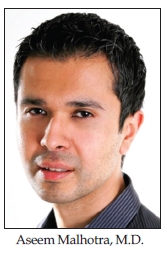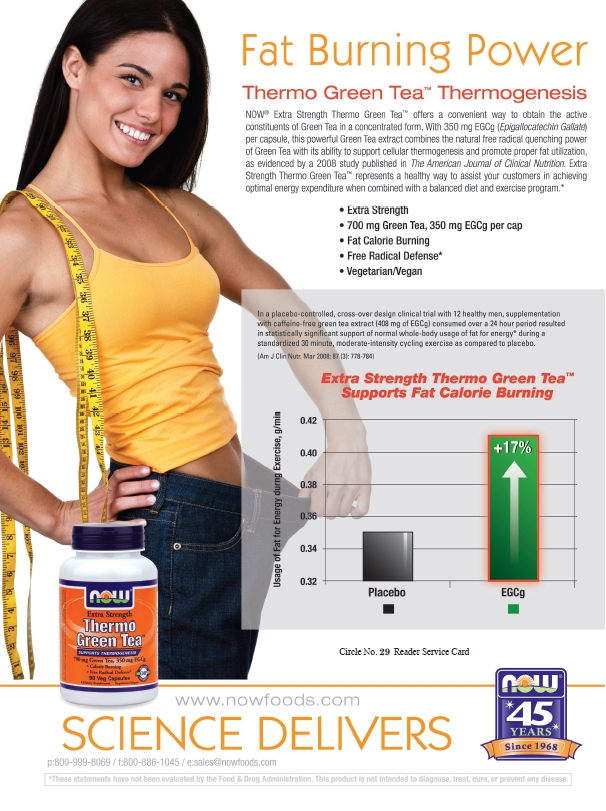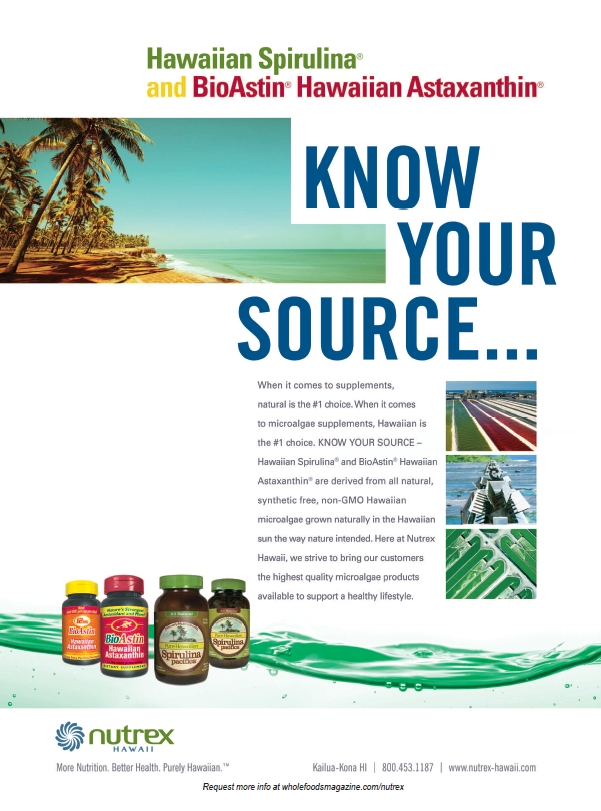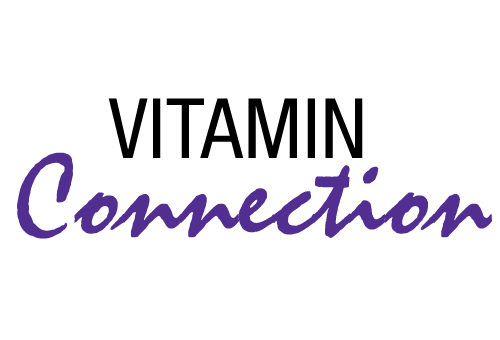It is easy to be confused by common statements such as “selenium does this…” or “selenium doesn’t do this…” Such statements imply that all forms of selenium are equal. Well, they’re not. To say selenium does or does not do something is very much like saying that “supplements” do or do not do something. All supplements are not the same and they have different and varying actions. Yes, selenium is an essential nutrient. Yes, the body can meet its normal nutritional requirements from a wide variety of selenium-containing compounds. There is, however, great variation—more than 1,000-fold—in the effectiveness of different selenium-containing compounds in preventing cancer. This may be due to a variety of reasons, including different ways in which the body handles different selenium-containing compounds or even that some selenium-containing compounds have direct anti-cancer activity themselves.
Scientists, including myself, have tried to make this difference clear for decades, but apparently some clinical researchers do not fully understand this and other important aspects of selenium biochemistry. It is also important for the general public to understand these differences. Recently, a clinical study was published that helps make the differences more understandable. I have called upon the study’s lead researcher, John Richie, Jr., Ph.D., to discuss the differences between selenium-containing compounds with us.
Dr. Richie is a professor of public health sciences and pharmacology at Penn State University College of Medicine in Hershey, PA. He received his Ph.D. in biochemistry from the University of Louisville in 1985. After additional postdoctoral training in pharmacology/toxicology, he joined the American Health Foundation (Institute for Cancer Prevention) in Valhalla, NY, where he developed and led a research program on cancer susceptibility and aging as part of their National Cancer Institute (NCI)-designated cancer center. In 2004, he moved his laboratory to the Penn State University College of Medicine where he is a member of the department of public health sciences and the Penn State Hershey Cancer Institute.

|
|
| John P. Richie, Jr., Ph.D., professor of public health sciences and pharmacology |
Dr. Richie’s research focuses on the elucidation of factors that link the biological aging process with increased risk for chronic diseases including cancer. Using an interdisciplinary research approach, the aim is to identify mechanistic factors, acting alone and in combination, which impact aging and cancer risk, with the ultimate goal of designing and developing targeted prevention strategies. Major areas of focus include diet and race/ethnicity with a particular emphasis on tobacco-related cancers. Specific mechanisms under investigation include critical pathways involved in the generation of and protection against oxidative stress.
Passwater: Congratulations on your recently published research on the differences between some forms of dietary selenium and their actions within the body (1). Dr. Richie, why did you want to become a biochemist?
Richie: Thank you. I became fascinated with biological research during my first year of college when I had the opportunity to work in the lab of James Danielli, Ph.D., D. Sc., a pioneer in the field of biology/biophysics in the mid-1900s. At the time, his research focused on the biological aging process. It was due to that life-changing experience that I began my love affair with biomedical research and, in particular, the aging process.
Passwater: What drew your interest to selenium?
Richie: Selenium, as an essential trace metal, plays numerous roles in protecting against oxidative stress. Research over the past several decades has indicated that oxidative stress plays a critical role in the aging process as well as in the development of many aging-related diseases and disorders, including cancer. My colleague, Karam El-Bayoumy, Ph.D., had been doing some fascinating research on the role of certain selenium-containing compounds in the prevention of cancer. Based on our combined research interests, we began a collaboration over 15 years ago that has focused on the elucidation of mechanisms by which these selenium-containing compounds may inhibit carcinogenesis in humans.
Passwater: Why do most nutritionists and researchers refer to all selenium-containing nutrients as if they are one and the same? Does the body handle all selenium-containing compounds exactly the same way? Is there only one biochemical pathway for all selenium-containing compounds?
Richie: First off, all selenium-containing compounds are NOT the same. In fact, we learn from introductory courses in chemistry that elements that comprise different molecules can have strikingly different properties. This is certainly true of selenium. While I do not know why many in the field tend to not distinguish between different selenium-containing compounds, I am guessing that it is because some of the needs for selenium in the body can be met by several different selenium-containing agents in the diet. But, I must point out that we still do not have a clear understanding of all of the important roles and mechanisms of selenium in the body and, in turn, the most effective dietary sources for meeting these additional needs. The role of selenium in cancer prevention is one such example.
Passwater: Is it likely that some biochemical pathways for selenium are more protective against cancer than other pathways? Some selenium compounds increase selenium-containing proteins such as the glutathione peroxidases or selenoprotein P more effectively than others, whereas there are indications that compounds that induce glutathione-S-transferase mRNA more effectively are the most effective anti-cancer nutrients (2). Haven’t animal studies shown that some selenium-containing compounds are 1,000 times more effective in cancer prevention than others, either directly or via various selenium biochemical pathways (3)?
 Richie: It is certainly likely that some of the pathways affected by selenium may be playing more important roles than others in the prevention of cancers. This is clearly suggested by results from many studies that show that some selenium-containing compounds are far more effective than others at preventing certain cancers in laboratory animals. But I must point out that we still do not have a clear idea of what pathways are most important in this regard.
Richie: It is certainly likely that some of the pathways affected by selenium may be playing more important roles than others in the prevention of cancers. This is clearly suggested by results from many studies that show that some selenium-containing compounds are far more effective than others at preventing certain cancers in laboratory animals. But I must point out that we still do not have a clear idea of what pathways are most important in this regard.
Passwater: As your recent research article stated, “Epidemiological and laboratory studies indicate that dietary selenium protects against prostate cancer” (1). Results from clinical trials suggest that selenium-enriched yeast (SY) but not selenomethionine (SeMet) may be effective at reducing prostate cancer risk. What was your objective in this latest study?
Richie: Despite the wealth of knowledge on different forms of selenium in cancer prevention derived from laboratory animal models, information in human studies is far more limiting. In one important clinical trial, selenized yeast was found to be highly protective against several cancers including prostate (4). However, in another important large-scale trial, selenomethionine, a major component of selenized yeast, was found to be ineffective (5). This led us to hypothesize that selenium-containing agents in selenized yeast other than selenomethionine were responsible for the anti-cancer activities observed in the first clinical trial. To test this, we performed the first head-to-head comparison of selenomethionine and selenized yeast in a short-term (nine month) clinical trial, which examined the effect of supplementation on markers of oxidative stress, a pathway thought to play a critical role in prostate cancer development.
Passwater: Please explain to our readers what biomarkers are for prostate cancer and why you studied them rather than actual cancer incidence? What can you learn from the biomarkers? What does oxidative stress mean to the cell and to human health?
Richie: Studies aimed at examining the impact of a specific treatment (e.g., selenium supplementation) on cancer (e.g., prostate cancer) require a large group of study subjects and long periods of time—consequently they are very expensive and time consuming to do. Therefore, it becomes far more efficient to do shorter and smaller-scale studies where, instead of measuring cancer as the outcome, we measure an event that occurs on the way to cancer development.
Unfortunately, for most cancers, we do not have a good “early indicator” of disease to use for this purpose. What is often used instead is an indicator of a biological process or pathway that we think might be linked to cancer risk—a so-called “biomarker.” In the case of this study, it is thought that oxidative stress is an important event involved in the development of prostate cancer—hence, we measured a series of biomolecules found in blood and urine that are indicative of the levels of oxidative stress in the body.
Oxidative stress is a chemical/biochemical  process that can occur in cells and tissues as a result of normal metabolism as well as environmental exposures. The accumulation of damage from this stress, if left un-checked, is thought to be an important factor in the development of many aging-related disorders including cancer.
process that can occur in cells and tissues as a result of normal metabolism as well as environmental exposures. The accumulation of damage from this stress, if left un-checked, is thought to be an important factor in the development of many aging-related disorders including cancer.
Passwater: You mentioned two previous clinical studies that used two different selenium-containing nutrients: SY and SeMet. What is the difference between the two? Do they follow exactly the same biochemical pathways in humans?
Richie: Selenomethionine (SeMet) is a selenium-containing molecule often found in living organisms and is thus categorized as an “organic” form of selenium. It is formed by replacing the element sulfur in the amino acid methionine with selenium. Selenized Yeasts (SY) are simply produced from baker’s yeast grown in a medium containing high levels of selenium. As a result, the yeasts contain high levels of selenium in a variety of organic forms, one of the major forms of which is SeMet. Thus, SY are not a single molecule, but mixtures of selenium-containing molecules. We chose to study the well-defined form of SY that was standardized with NCI and validated by NCI as the intervention agent in a series of confirming cancer prevention trials, including for prostate cancer (as SelenoExcell from Cypress Systems, Inc.).
Passwater: NCI published its guidelines for consideration as a food substance for clinical trials (6). They emphasized, “A second important concept in the development of food-derived chemopreventive agents is careful characterization of the active substance(s) and the technology to ensure reproducible preparations. For example, definition of growth conditions (e.g., hours of sunlight or soil nutrients) may be important, as may be the precise extraction conditions and spectrophotometric characteristics of the preparation to ensure the similarity of different preparations of the agent” (6).
As I understand it, the NCI required that the SY be standardized prior to funding of ongoing confirming trials for colon, lung and prostate cancer prevention. As a nutritional intervention agent, it was critical to establish a definitive standard for the ingredient and draw a clear distinction between a clinical intervention agent and other products on the market, including adulterated products. Cypress Systems took the lead in this effort and in 1999 signed a Clinical Trial Agreement (CTA) with the Division of Cancer Prevention (DCP) at NCI (7). The standardized high selenium yeast was trademarked in the CTA as SelenoExcell High Selenium Yeast.
When Dr. Larry Clark and his colleagues reported dramatic success in the Nutritional Prevention of Cancer Trial using SY, why wasn’t that the nutrient used for the follow-up clinical study? Doesn’t proper scientific method require that a study be confirmed using the identical nutrient?
Richie: In retrospect, it seems that SY would have been a better choice in accordance with scientific method. While I cannot speak directly to the reasons why the follow-up study used SeMet rather than SY as I was not involved in this process, I believe one important factor was concern over potential biological variations in the production of SY. This concern centered on the possible variation in the relative amounts of the different selenium-containing molecules within different batches of SY. Thus, by going to a single agent, namely SeMet, such variation could be eliminated. Of course, by doing this, they ran the risk of not selecting a compound that was active against cancer development.
Passwater: Is yours the first human trial ever comparing SelenoExcell SY versus SeMet in the same clinical trial?
Richie: To my knowledge, yes.
Passwater: Well, what did your study show about the two different selenium-containing nutrients?
Richie: Looking at the biomarkers of oxidative stress mentioned previously, we found that selenium yeast was effective at reducing levels of oxidative stress while SeMet was not. We were careful to use doses of SY and SeMet that were used in the previous clinical trials and, for comparison purposes, a dose of SY that would provide equivalent levels of SeMet as were given in the SeMet group. Another important finding was that the impact of SY on these biomarkers was greater in individuals with low levels of selenium in their blood at baseline. This later finding was consistent with previous data that suggests that selenium supplementation is most effective in such individuals.
Passwater: Where will your research take you from here?
Richie: We believe that this research helps pave the way for future studies that aim to identify other selenium-containing compounds found either in yeast or elsewhere that are active in cancer prevention. While funding for selenium research remains tight, we believe that further elucidation of the importance of chemical form in selenium activity will once again spur a resurgence in the search for and development of selenium-based strategies in cancer prevention.
Passwater: Although some clinical studies have not supported earlier positive findings, scientists around the world continue to publish dozens and dozens of findings that are very supportive. We need properly designed clinical studies of appropriate cancers in appropriate populations (persons not already having optimal selenium levels) using appropriate forms of selenium such as selenized yeast or specific selenium-containing compounds that are well documented to have powerful anti-cancer properties. Thank you, Dr. Richie, for discussing your research with us a nd for clarifying the difference between two forms of selenium-containing compounds.
nd for clarifying the difference between two forms of selenium-containing compounds.
I also note that you have just published a very interesting research report on dietary glutathione. Let’s chat about that a little later in the year.
Richie: That will also be my pleasure. WF
Dr. Richard Passwater is the author of more than 45 books and 500 articles on nutrition. Dr. Passwater has been WholeFoods Magazine’s science editor and author of this column since 1984. More information is available on his Web site, www.drpasswater.com.
Previous Vitamin Connections are available at www.wholefoodsmagazine.com/columns/vitamin-connection
References
1. J.P. Richie, et al., “Comparative Effects of Two Different Forms of Selenium on Oxidative Stress Biomarkers in Healthy Men: A Randomized Clinical Trial,” Cancer Prev. Res. 7 (8), 796–804 (2014).
2. P.A. Hoen, et al., “Induction of Glutathione-S-Transferase mRNA Levels by Chemopreventive Selenocysteine Se-Conjugates,” Biochem. Pharmacol. 63 (10), 1843–1849 (2002).
3. C. Ip, “Lessons from Basic Research in Selenium and Cancer Prevention,” J. Nutr. 128 (11), 1845–1854 (1998).
4. L.C. Clark, et al., “Effects of Selenium Supplementation for Cancer Prevention in Patients with Carcinoma of the Skin,” JAMA 276 (24), 1957–1963 (1996).
5. M. Scott, et al., “Effect of Selenium and Vitamin E on Risk of Prostate Cancer and Other Cancers: The Selenium and Vitamin E Cancer Prevention Trial (SELECT),” JAMA 301 (1), 39–51 (2009).
6. G.J. Kelloff, et al., “Progress in Cancer Chemoprevention: Development of Diet-Derived Chemopreventive Agents,” J. Nutr. 130, 467S-471S (2000).
7. Agreement between Cypress Systems Inc. and the Division of Cancer Prevention, National Cancer Institute for the clinical development of SelenoExcell® High Selenium Yeast, CTA #329 (December 21, 1999).
Published in WholeFoods Magazine, January 2015










